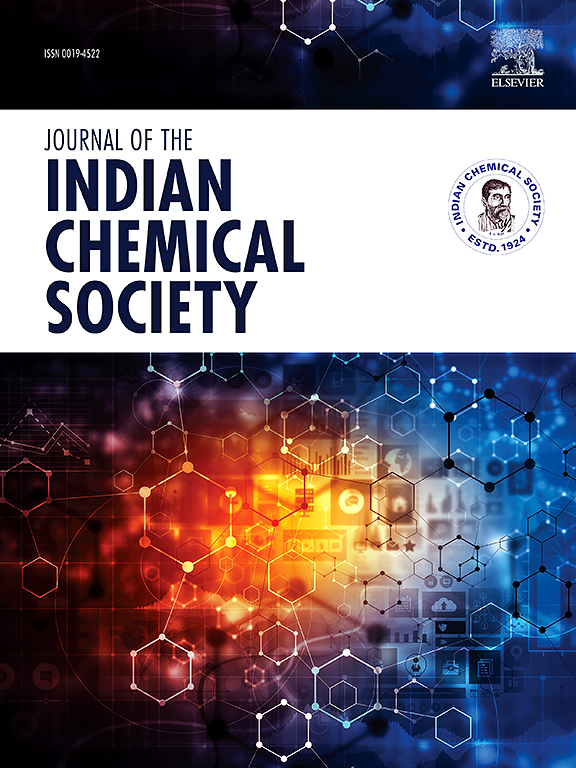Synthesis, characterization, and in vitro antimicrobial studies of new Mn(II), Fe(III) and Ni(III) complexes based on 4-[(2 sulfanylphenyl)diazenyl]naphthalen-1-ol ligand
IF 3.2
4区 化学
Q2 CHEMISTRY, MULTIDISCIPLINARY
引用次数: 0
Abstract
This study successfully synthesized three novel metal complexes: MnSDN, FeSDN, and NiSDN, and thoroughly characterized them using UV spectroscopy, infrared (IR) spectroscopy, mass spectrometry, elemental analysis, conductivity and magnetic measurements, as well as thermogravimetric analysis (TGA). The IR spectral analysis indicates that the azo ligand, 4-[(2-sulfanylphenyl)diazenyl]naphthalen-1-ol (SDN), coordinates with metal ions via its nitrogen atoms in the azo (-N![]() N-) bond and sulfur atoms in the thiol (-SH) moiety. Thermal analysis (TGA) further revealed the quantity & binding sites of H2O molecules within the complex compounds. Additionally, in vitro assessments of the antibacterial & antifungal activities of the ligand and its metal complex components were conducted against various pathogenic bacteria & fungi. Particularly, the metal complex products revelation significantly greater inhibitory effects on certain microorganisms compared to the uncoordinated ligand. Among the tested compounds, the metal complexes demonstrated superior biological activity, whereas the free ligand showed the least efficacy. These promising results suggest that these metal complexes possess potential physiological effects and may serve as valuable candidates for various medical applications in the future.
N-) bond and sulfur atoms in the thiol (-SH) moiety. Thermal analysis (TGA) further revealed the quantity & binding sites of H2O molecules within the complex compounds. Additionally, in vitro assessments of the antibacterial & antifungal activities of the ligand and its metal complex components were conducted against various pathogenic bacteria & fungi. Particularly, the metal complex products revelation significantly greater inhibitory effects on certain microorganisms compared to the uncoordinated ligand. Among the tested compounds, the metal complexes demonstrated superior biological activity, whereas the free ligand showed the least efficacy. These promising results suggest that these metal complexes possess potential physiological effects and may serve as valuable candidates for various medical applications in the future.

求助全文
约1分钟内获得全文
求助全文
来源期刊
CiteScore
3.50
自引率
7.70%
发文量
492
审稿时长
3-8 weeks
期刊介绍:
The Journal of the Indian Chemical Society publishes original, fundamental, theorical, experimental research work of highest quality in all areas of chemistry, biochemistry, medicinal chemistry, electrochemistry, agrochemistry, chemical engineering and technology, food chemistry, environmental chemistry, etc.

 求助内容:
求助内容: 应助结果提醒方式:
应助结果提醒方式:


